Call it what you want — the Third Age, the Silver Tsunami or the Longevity Boom — but there is no escaping the fact that the world’s population is getting older. Decades of steadily rising life expectancy and declining birth rates have got us to this point, especially in Singapore, which has one of the fastest-ageing populations in the world. By 2030, all ‘baby boomers’ (those born in the post-war period between 1946 and 1964) will enter the ‘65 and older’ age group, and government statistics project that they will make up 23.8 per cent of Singapore’s citizen population — up from 17.6 per cent in 2021.
To put it another way, about one in four Singaporeans will be 65 years old and above by 2030. This realisation has caused much handwringing and debate over a host of issues. Among these include the potential ramifications on individual health as well as the public healthcare system, the adequacy of social support and protection for older people, strategies to enhance their livelihoods and productive capacity, and how living spaces can be re-designed or new technologies developed to help seniors live independently for longer.
Not ones to shy away from a challenge, NUS’ faculty, students and alumni are addressing these issues head on, and from multiple dimensions.
DID YOU KNOW?

According to a study published in
The Lancet in 2018, Singaporeans will have an average life span of
85.4 years in 2040, the third-longest globally next to Spain and Japan.
AT THE CELLULAR LEVEL
Any thoughtful discussion on ageing should distinguish between life expectancy — the average number of years a person can expect to live — and healthy life expectancy, defined as the average number of years a person can expect to live in good health, free of physical functional limitations. In a 2019 report by the Ministry of Health (MOH) and the United States-based Institute for Health Metrics and Evaluation (IHME), researchers made this distinction while studying the burden of disease in Singapore from 1990 to 2017 (
see table below). An increasing trend was found for both metrics: however, although Singaporeans are now living longer, they are spending a greater proportion of that time in ill-health due to chronic disease or injury.
The big question, then, is how to increase life expectancy and simultaneously reduce the amount of time people spend in poor health. At the National University Health System’s (NUHS) Centre for Healthy Longevity, various research projects are ongoing to develop and test interventions that can delay the ageing process — to be specific, one’s biological age, measured by the extent of damage to the body’s cells, tissues and organs over time. This parameter takes into account not just how long a person has been alive (chronological age) but also other factors such as genetics, lifestyle and nutrition. The sooner we know our biological age, the sooner we can intervene to delay or prevent the onset of chronic diseases such as diabetes, hypertension and heart disease.
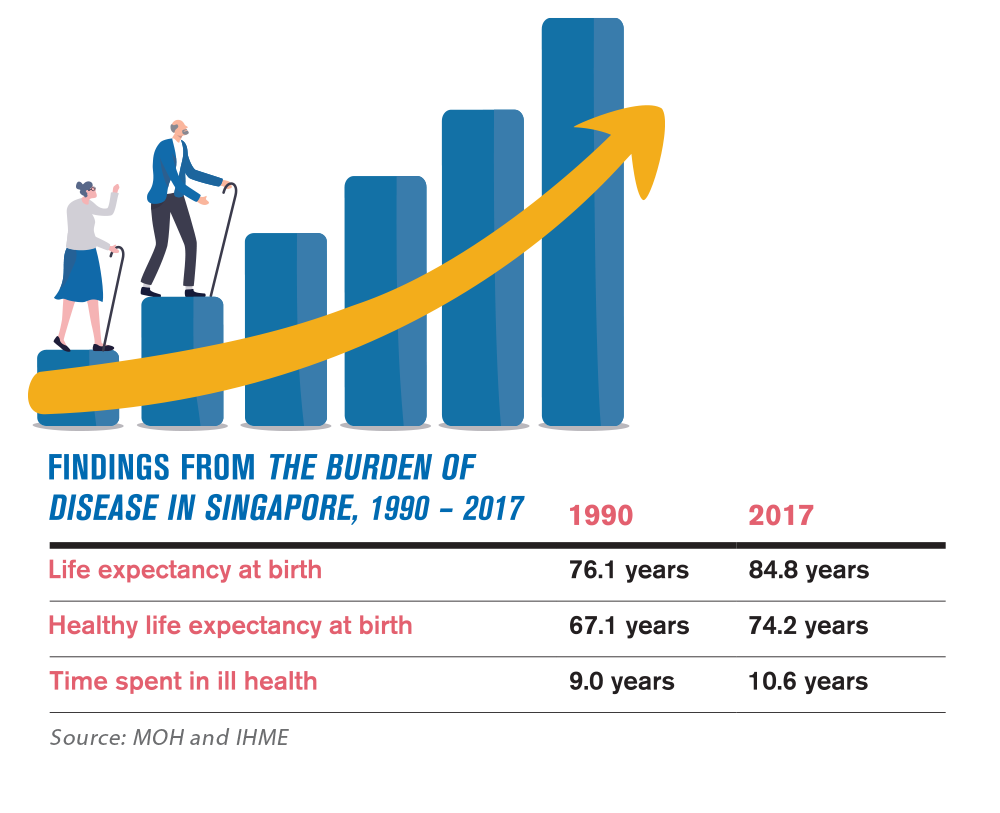
Professor Brian Kennedy, the Centre’s Director, heads the Healthy Longevity Translational Research Programme at NUS Yong Loo Lin School of Medicine, where scientists and clinicians are investigating different aspects of the biology of ageing — for example, systemic ageing, vascular ageing, or brain ageing — to identify pathways for intervention. Other studies involving human subjects aim to, for instance, test the use of novel biomarkers of ageing in hospitals, or assess the effectiveness of different types of exercises and nutritional supplements in lowering the biological age of certain population groups.
“Chronic diseases are hard to completely reverse. If people manage them, they will live longer. But if we can slow ageing, they won’t get the diseases in the first place,” Prof Kennedy told CNA in June 2022 as part of NUS’ documentary series,
Innovating for the Future. “The middle-aged population is at [highest] risk of getting chronic diseases in the near future. If we can target them [through biological age testing], we can slow or reverse aspects of their ageing.”
![]()
The middle-aged population is at [highest] risk of getting chronic diseases in the near future. If we can target them [through biological age testing], we can slow or reverse aspects of their ageing.
Professor Brian Kennedy, Director, Centre for Healthy Longevity, NUHS, in a June 2022 CNA interview
A MATTER OF CARE
Elsewhere at NUS, the research focus is less on the biological or clinical aspects of ageing, and more on the social and psychological side. Duke-NUS Medical School’s Centre for Ageing Research and Education (CARE) is perhaps best known for its large, longitudinal, nationally-representative surveys of older adults in Singapore, including the
Panel on Health and Ageing of Singaporean Elderly (PHASE) and
Transitions in Health, Employment, Social Engagement and Inter-generational Transfers in Singapore (THE SIGNS). Besides these, studies on specific ageing-related themes — such as caregiver stress and health literacy among older people — have led to real policy changes. More support services for caregivers have since been established, and healthcare institutions now increasingly provide bilingual information on prescription medication labels.
“In 2021, we released a paper on how loneliness impacts health expectancy among older adults — an issue which garnered a lot of attention during the COVID-19 pandemic as many people were isolated at home,” says Dr Rahul Malhotra, Assistant Professor, Deputy Director and Head of Research at CARE, in an interview with The
AlumNUS. Co-authored with experts from Japan and published in the
Journal of the American Geriatrics Society, the study reported that older adults aged 60 and above who perceive themselves to be lonely are likely to die a few years earlier than their never-lonely peers. Moreover, they are likely to spend less of their remaining life in good health or without limitations when carrying out activities of daily living activities, such as bathing or feeding themselves.
This finding highlights the importance of identifying and alleviating loneliness among older adults, for instance, through regular visits or video calls with volunteer befrienders for seniors living alone. It also adds to CARE’s body of work about the impact of different health and social constructs on life and health expectancy. For example, Dr Malhotra shares, “We found that females live longer than males but spend more time in bad health. Non-Chinese Singaporeans have a greater prevalence of chronic diseases. Those with lower educational qualifications tend to have lower health expectancy as well.”
From CARE’s research repository, another key fact stands out: “Despite the physical limitations that inevitably come with ageing, we shouldn’t be fatalistic in the perception that things will always go downhill when we get older,” says Dr Malhotra. “Our research shows heterogeneity in the ageing experience; physically, mentally and socially. In terms of social support or engagement, the usual expectation is that as you grow older, your social networks tend to shrink. But our work has found that the opposite is quite often true.”
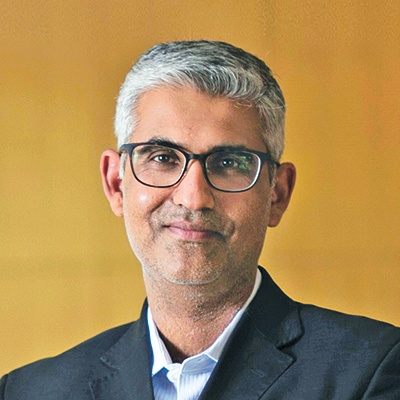
In 2021, we released a paper on how loneliness impacts health expectancy among older adults — an issue which garnered a lot of attention during the COVID-19 pandemic as many people were isolated at home.
Dr Rahul Malhotra, Assistant Professor, Deputy Director and Head of Research, CARE, Duke-NUS Medical School
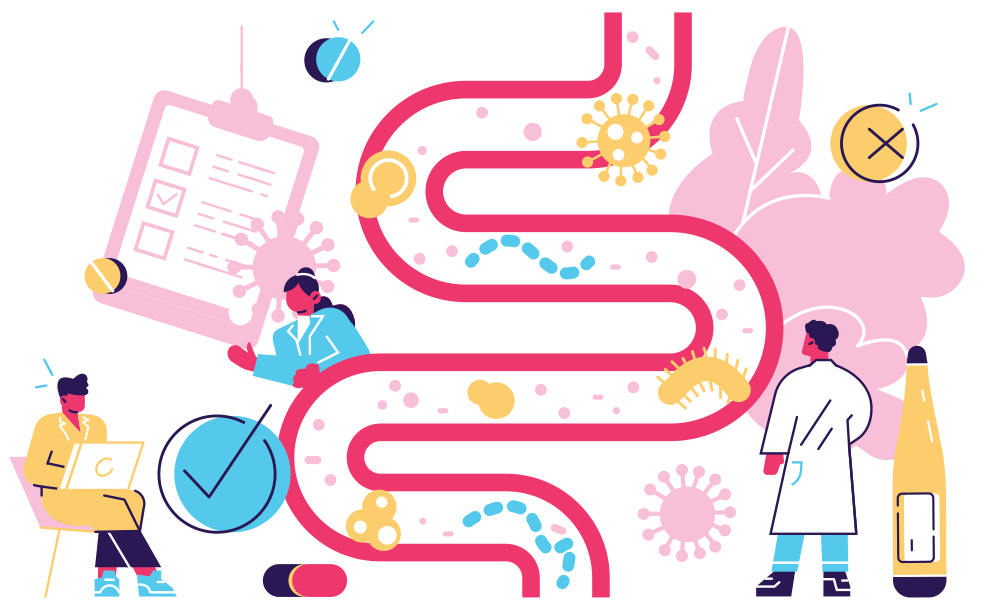
YOU ARE WHAT YOU EAT
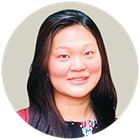
With greater awareness of how good nutrition can help people age well and prevent or manage chronic illness, the food science industry is booming. At Danone Specialized Nutrition, Senior Health & Science Manager Ms Mia Isabelle (Science ’07) leads the company’s nutrition and scientific aspects of healthy ageing innovations in Southeast Asia. She reveals two exciting areas of food research:
1. Mobility “Ageing causes decline in muscle, bone and joint health, which is important for movement. For example, our muscle mass starts to decline from the age of 30 and the loss accelerates after 50. At the same time, our muscles become less sensitive to protein intake. Older people can benefit from higher protein intake, and nutrients like vitamin D and leucine, to help promote muscle protein synthesis.”
2. Gut microbiota “There is growing knowledge of the importance of our gut microbiota beyond gut health [i.e., not just to aid digestion and regulate immune function but also prevent weight gain, control blood sugar, and improve brain and heart health]. Ageing alters the gut microbiota balance, so specific probiotics and prebiotics that help restore the balance would be helpful for older populations.”
REAPING THE LONGEVITY DIVIDEND
Assistant Professor Cynthia Chen (Science ’09) from the Saw Swee Hock School of Public Health (SSHSPH) is similarly critical of public discourse that depicts the elderly population as a giant millstone around society’s neck. “The aged population is a potential well of resources which, if we properly understand and tap into, can immensely benefit our society. This goes beyond helping them to live healthier lives. It is also about utilising their life experiences and extended healthy years to continually engage society as productive members,” she says.
Indeed, the term ‘longevity dividend’ has entered the vernacular. It refers to the potential of people to contribute as they age — by remaining in the workforce and boosting organisational diversity and performance, paying taxes to support public services, serving as caregivers and volunteers, increasing gross national income through accumulated wealth, and so on.
As a statistician, Asst Prof Chen’s research covers five main areas:
- Productivity and engagement, which measures the engagement of older persons in society, either through paid work or volunteering;
- Well-being, which measures the health of older persons;
- Equity, which measures the gap between the ‘haves’ and the ‘have nots’;
- Cohesion, which measures social connectedness within and between generations; and
- Security, which measures economic and physical security for older persons.
Preliminary findings reveal that a number of issues still need to be ironed out to enable seniors’ full participation in, and contribution to, society. One area of concern is the persistent gender gap. “Gender differences tend to favour men in areas of productivity, engagement and security. It may be a difference in preferences, whereby women choose to retire earlier to spend more time with grandchildren or take career breaks to care for their children or aged parents. As such, women tend to live longer than men, with lower income and savings, and are more likely to live alone due to widowhood,” Asst Prof Chen explains. “If we take their lower income and savings, and divide it by a longer life span, they have less resources to get through to the end of their lives. Therefore, they are at higher risk of living in poverty than men in old age. Huge income differences between genders suggest that there is room for improvement with regards to women’s paid work, job opportunities and retirement income.”
WHAT’S NEW
Dr Malhotra clues us in on the latest updates to CARE’s ongoing studies.
- Prescription Medication Label Improvement for Singaporean Elderly (PROMISE)
“We are currently in partnership with SingHealth and the National Healthcare Group to develop locally-specific pictograms for use on medicine labels. Hopefully, these will one day be used across Singapore’s health system.”
- Caregiving Transitions among family Caregivers of Elderly Singaporeans (TraCE)
“We enrolled 300 caregivers and followed up with them over time. We are now analysing the data to identify patterns in health and well-being, employment, and other outcomes among caregivers.”
- Qualitative Insights into Caregiving Transitions (Quali-T)
“We purposefully sampled and interviewed caregivers from the TraCE study to find out what drives their positive or negative perceptions of caregiving. The aim is to develop a pilot intervention for enhancing positive caregiving experiences.”

The aged population is a potential well of resources which, if we properly understand and tap into, can immensely benefit our society.
Assistant Professor Cynthia Chen, Saw Swee Hock School of Public Health, NUS
More can also be done to keep seniors meaningfully engaged in society. She adds, “Factors such as having a more flexible schedule, workplace proximity, and proper matching of their interests and skills to the tasks have been identified as important considerations by some studies. This is a two-way street, as evidence shows that continued work also benefits older adults both mentally and physically.” That said, it is important to differentiate between older adults who continue to work because they have to make ends meet, and those who are financially secure and choose to continue to work. Asst Prof Chen notes the need to identify and provide assistance to the former group, and to also recognise the often-overlooked contributions in unpaid work such as volunteering.
Arguably, though, fixing the pain points in healthcare takes precedence. “Singapore’s conventional method for healthcare payment uses fees for service, and works based on volume and treating illnesses and injuries as they occur,” says Asst Prof Chen. “This is expensive and unsustainable, as hospitals and healthcare organisations cannot expand indefinitely. Furthermore, as chronic diseases are a cumulation of lifestyle behaviours, a life course approach to understanding and preventing such diseases is necessary.” MOH’s announcement earlier this year to pursue a
Healthier SG strategy — which aims to motivate all Singaporeans to proactively take steps towards better health and quality of life through preventive care — is therefore very timely.
THE CASE FOR HEALTHCARE TRANSFORMATION
Before
Healthier SG, there was MOH’s
Three Beyonds — the three paradigm shifts regarded as critical for the transformation of our healthcare system, in preparation for an ageing population. At Tan Tock Seng Hospital (TTSH), Adjunct Associate Professor Ian Leong (Medicine ’92), now the Assistant Chairman Medical Board (Community Care Integration), has spent the better part of his career focused on moving ‘Beyond Hospital to Community’.
“The
Three Beyonds, especially ‘
Beyond Hospital to Community’, represented a clarion call to all healthcare clusters for a more concerted involvement of hospital staff in the community, working alongside our community partners, to coordinate and integrate care,” says Assoc Prof Leong. “It recognised that the reality of managing chronic illness is ‘out there’ and not in the hospital.”
TTSH, for its part, has gradually stepped up its involvement in the community over the last two decades or so. Shared care between hospital specialists and polyclinic doctors is becoming the norm. In addition, TTSH runs multidisciplinary care teams comprising doctors, nurses, allied health professionals and health coaches (trained laypersons) who work in diverse community settings across the Central Singapore region. For instance, in home care, a dedicated team regularly visits patients (mostly elderly) who are frail or bedridden to provide direct medical care and to also support caregivers. Neighbourhood community health posts, usually set up within the premises of social service agencies and manned by nurses or health coaches, allow residents to easily access routine health screenings and learn how to manage chronic conditions. The hospital also partners with nursing homes to provide quality palliative care for those approaching the end of life.
Like Asst Prof Chen, Assoc Prof Leong agrees that further healthcare expansion, albeit necessary to some degree, is by itself not a panacea for our greying population. “Studies show that healthcare services only contribute about 10 per cent to the health of a population. Psychosocial determinants of health — including residents’ social and physical environment as well as their health behaviours — are more important. For example, studies estimate that residents take their medications 60 to 70 per cent of the time,” he explains.
“While there will be a continued need to address gaps for people who are unable to manage themselves, we need to think of other ways of tackling the psychosocial determinants of health. The answer to that is likely to lie beyond the medical fraternity and would require the active involvement of residents and caregivers.”

Studies show that healthcare services only contribute about 10 per cent to the health of a population. Psychosocial determinants of health — including residents’ social and physical environment as well as their health behaviours — are more important.
Adjunct Associate Professor Ian Leong, Assistant Chairman Medical Board (Community Care Integration), Tan Tock Seng Hospital
 Held at a community pavilion at Stirling Road, the GeronTech Showcase in April 2022 allowed students to demonstrate their prototypes at their respective booths and also give slide presentations to a live audience of seniors.
Held at a community pavilion at Stirling Road, the GeronTech Showcase in April 2022 allowed students to demonstrate their prototypes at their respective booths and also give slide presentations to a live audience of seniors.
WHAT IS HEALTHIER SG?
HOW IT WORKS
- From 2023, each resident may enrol with a family physician of their choice at a polyclinic or General Practitioner (GP) clinic.
- The family physician will develop a personalised health plan for the resident, with regular follow-up visits to monitor adherence and discuss next steps.
- The family physician will collaborate with other healthcare providers, and partner with community and social service agencies, to improve continuity of care and address the wider (non-medical) determinants of health.
THE UPSHOT

THE PROMISE OF GERONTECHNOLOGY
In response to global ageing, a relatively new field called gerontechnology — a portmanteau of gerontology and technology, and first coined in the 1990s — has gained popularity. “Gerontechnology is an interdisciplinary field that looks into the design, development and deployment of technologies to mitigate the challenges associated with ageing. These include assistive devices for mobility and rehabilitation, assistive devices for daily living – for example, automated pill dispensers, health monitoring devices for seniors and sensory aids – and technologies that assist caregivers in their caregiving,” says Dr James Kah (Engineering ’03), a Senior Lecturer at the Department of Biomedical Engineering. However, he notes, it is still nascent in Singapore. “I see big gaps in gerontechnology and assistive technology development in Singapore, since very few products that cater to these communities are developed locally to fit our local needs.”
Therefore, in 2020, Dr Kah initiated the Gerontechnology in Ageing module to introduce Biomedical Engineering students to the concept, and to equip them with knowledge and skills in this area. Using a community-based learning approach, the module includes a service-learning component where students work with social service agencies and the elderly to co-create innovative, affordable solutions that cater to their needs. “This high level of community engagement — where students work directly with clients in the solutioning process — allows our students to have a more direct impact on the lives of people, especially those who are disadvantaged in life due to their physical limitations. It is a powerful approach towards empathy-driven technology development,” he elaborates.
INTRODUCING…
Out of the student prototypes exhibited at the GeronTech Showcase, a few have reached or are close to reaching the end-goal of community deployment at scale. They are:
Makan Together
Adaptive tableware for the visually-impaired - Initially co-designed with and for an elderly blind man at St Luke’s ElderCare, it facilitates independent feeding through modular, customisable components; raised dots for tactile identification of individual dishes; and large slopes to scoop up food easily. To date, about 400 pieces have been distributed to social service agencies.
Grip Buddy
A hip solution to a jarring problem - Targeting seniors with weak hand strength and grip — for example — stroke survivors, it allows them to open and close the lids of jars and bottles using just one hand and the hip. It is also useful for people with upper limb disabilities. Orders have been placed by local social service agencies and it is currently being manufactured at scale.
Happy Feet
An elderly-friendly dancing game - Like Dance Dance Revolution but for older adults, it encourages them to move their feet and promotes cognitive stimulation with features such as slower game speeds, larger on-screen icons and popular songs from back in the day. Play tests have been completed at a few senior care centres, and mass production is set to begin soon.
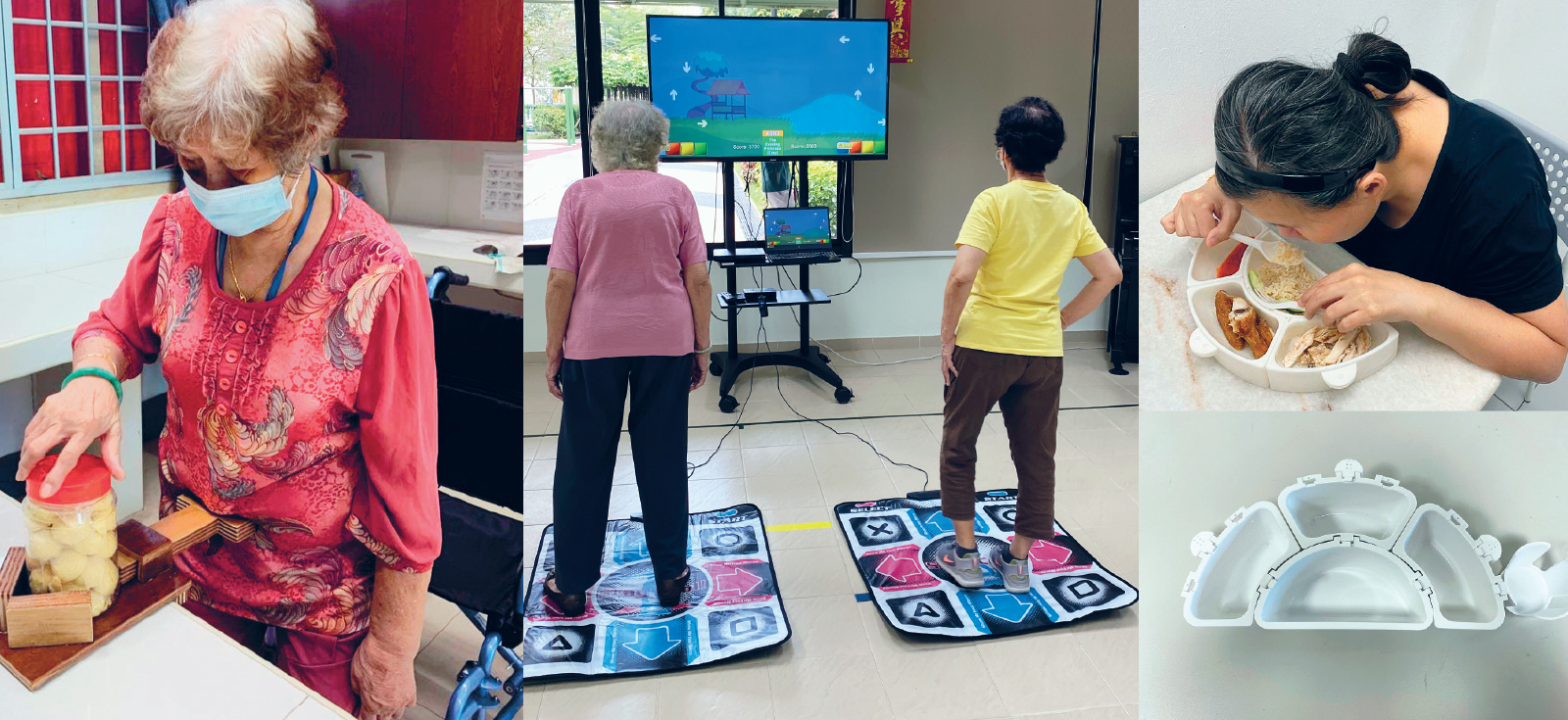 Gerontechnologies in use (left to right): Grip Buddy; Happy Feet; and Makan Together.
Gerontechnologies in use (left to right): Grip Buddy; Happy Feet; and Makan Together.
![]()
As the population continues to age, our society will increasingly turn to technology to address some of the associated challenges. The emerging silver economy will bring more opportunities for new technologies to be deployed with its increasingly larger user base.
Dr James Kah, Senior Lecturer, Department of Biomedical Engineering, NUS
Some of the students’ prototypes were presented at a special GeronTech Showcase event held on 22 April 2022 at Stirling Road, as part of the multi-stakeholder
Health District @ Queenstown pilot initiative. Organised by NUS in partnership with Lions Befrienders and the People’s Association, the event attracted about 200 residents from the neighbourhood. They visited the various booths, tested the devices on show, and gave useful feedback to the project teams for further refinement.
Among those participating in the event was 22-year-old Ms Fatin Sharafana Binte Mohd Haniff, now in the final year of her Biomedical Engineering degree. “Before taking the module last semester, I was aware of the potential of gerontechnology from visits to my grandmother’s. I have a close relationship with my grandmother who lives alone, and frequent visits to her place made me realise there are gaps that can be filled with gerontechnology to help older adults live independently and safely,” she says. The course exposed Ms Fatin to a broad range of ageing-related challenges, resulting in the prototype she and her teammates developed, called Brake Bear.
 Ms Fatin Sharafana (left, wearing black shirt) and her team debuted their Brake Bear at the GeronTech Showcase.
Ms Fatin Sharafana (left, wearing black shirt) and her team debuted their Brake Bear at the GeronTech Showcase.
Inspired by an elderly person from the Lions Befrienders’ Senior Group Home programme, Brake Bear is basically a set of wheel chocks that can be attached to any rollator for extra stability, on top of the rollator’s brakes. Elderly users can thus transfer from a standing to sitting position (and vice versa) on their rollators without the help of a caretaker, allowing them to move around on their own. “We debuted our prototype at the GeronTech Showcase and residents who tried it were impressed. When the wheel chocks were deployed, they found that the rollator stayed securely in place during a transfer. Some even expressed interest in purchasing the product!” Ms Fatin shares. Currently, her team is experimenting with different materials to improve the product’s durability, in hopes of eventually making Brake Bear commercially available.
For Dr Kah, guiding students as they seek to bring their inventions to fruition, and seeing them interact and build relationships with elderly clients beyond the projects, has been an “enriching” experience. “As the population continues to age, our society will increasingly turn to technology to address some of the associated challenges. The emerging silver economy will bring more opportunities for new technologies to be deployed with its increasingly larger user base.”
REFRAMING AGEING, IN PLACE
The intent behind gerontechnology — and, it could be said, all the work described here — is to create an environment that promotes social participation in later life and enables older adults to live independently in their own homes or within the community for as long as possible. Policymakers have dubbed this ‘ageing in place’. It is grounded in the belief that older adults have much to contribute and, with the right support, should feel empowered to stay healthy and active in their advanced years. It runs counter to ageist attitudes and stereotypes that portray seniors as being past their prime or as sick, dependent and vulnerable individuals.
So, let us flip the narrative and celebrate getting older instead of dreading it. Let us remember that reaching a certain age is a positive achievement, for it reflects the success of modern science and healthcare, as well as one’s good fortune. Let us each play our part to help older adults live well and age gracefully. They may well be you and me one day.
FITS LIKE A GLOVE
NUS students were not the only ones who took part in the GeronTech Showcase — so did researchers like Associate Professor of Biomedical Engineering Raye Yeow (Engineering ’06), whose EsoGLOVE is a wearable, soft robotic glove used in the rehabilitation of patients with impaired hand functions, for example, stroke survivors.
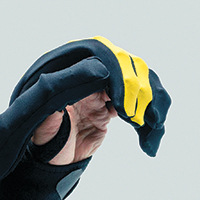 In 2016, you co-founded Roceso Technologies to commercialise EsoGLOVE. Can you tell us a little bit about the device?
In 2016, you co-founded Roceso Technologies to commercialise EsoGLOVE. Can you tell us a little bit about the device?
EsoGLOVE was officially launched in the market in 2020. Based on feedback we had gathered over the years from clinicians, therapists and patients, key features include the use of biocompatible lightweight fabric material for our soft actuation technology, a video-based feedback app to promote motor imagery, a highly-portable mini control box, and rigorous testing to meet international standards for device safety.
What has your journey in the gerontech start-up world been like?
Public reception to EsoGLOVE has been great, particularly from stroke survivors who prefer to undergo hand rehabilitation exercises at home, rather than making trips to the hospital or rehabilitation clinic for their therapy sessions. We are seeing the growing importance of decentralised robot-assisted care at home, especially given the pandemic. The main buyers are healthcare providers and nursing homes, and we also rent it out to stroke patients for home use. Currently, EsoGLOVE is sold in more than 15 countries and used in over 50 hospitals worldwide.
Where do you see the gerontechnology market going in the coming years?
I expect to see greater penetration of gerontechnologies, and this space to be a prominent area of innovation towards productive longevity. We are looking at the emergence of digital health, serious games, bespoke assistive technologies and healthcare robotics that can better support the elderly in their activities of daily living and improve their cognitive and motor health, thereby enhancing their quality of life.
 Assoc Prof Yeow (far right, holding the EsoGLOVE) with the other co-founders of Roceso, Dr Yap Hong Kai (Engineering ’13) and Ms Jane Wang (Engineering ’16).
Assoc Prof Yeow (far right, holding the EsoGLOVE) with the other co-founders of Roceso, Dr Yap Hong Kai (Engineering ’13) and Ms Jane Wang (Engineering ’16).